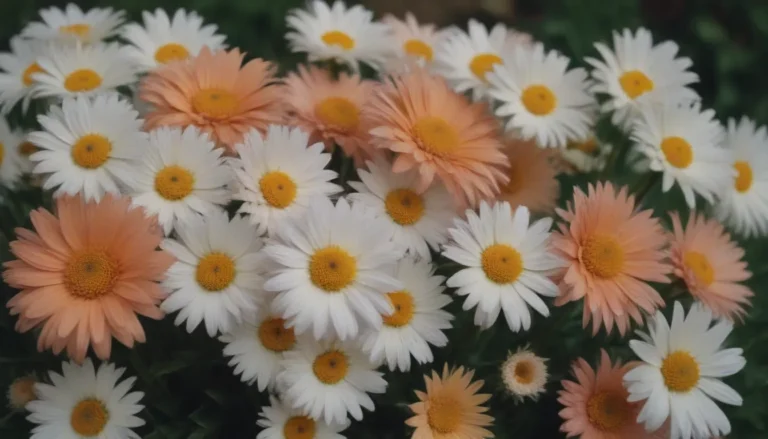The Beauty of Blue and Purple Potato Varieties for Your Garden

Are you tired of the same old potato varieties in your garden? Why not spice things up with some blue and purple potato varieties this growing season? These colorful spuds not only add a pop of color to your meals but also offer unique flavors and nutritional benefits. In this article, we’ll explore 9 blue and purple potato varieties that you can try in your garden this year. From ‘Purple Marker’ to ‘Vitelotte,’ each variety has its own distinct characteristics that make it a delightful addition to any garden.
Why Blue and Purple Potatoes?
Most blue and purple potato varieties originated in South America and get their vibrant hues from anthocyanin pigments, the same compounds found in blackberries and red cabbage. These pigments not only give the potatoes their striking colors but also offer health benefits such as antioxidant properties. So, not only are blue and purple potatoes visually appealing, but they are also nutritious additions to your diet.
Caring for Blue and Purple Potatoes
When it comes to planting and caring for blue and purple potatoes, the process is similar to that of white or gold-flesh potatoes. Here are some tips to help you grow a successful crop of colorful spuds:
- Purchase seed potatoes from a home and garden center or online seed companies that offer a variety of cultivars.
- Choose cultivars that are best suited for your growing conditions, paying attention to factors such as size, growing time, and yield.
- Consult your local state agricultural extension office for valuable information on what grows best in your area.
9 Blue and Purple Potato Varieties to Try
All Blue
- Description: Also known as ‘Purple Marker,’ this medium-sized potato features blue skin and flesh with beautiful blue flowers.
- Hardiness Zones:
- Light:
- Soil:
- Mature Size:
- Days to Maturity:
Adirondack Blue
- Description: Tested and recommended by Cornell University and the University of Florida Extension, ‘Adirondack Blue’ boasts glistening blue skin and deep blue flesh without a white vascular ring.
- Hardiness Zones:
- Light:
- Soil:
- Mature Size:
- Days to Maturity:
Blaue (Blue) St. Galler
- Description: Resulting from a cross made in Switzerland, this variety features tubers with a long shape and medium depth eyes.
- Hardiness Zones:
- Light:
- Soil:
- Mature Size:
- Days to Maturity:
Blue Tomcat
- Description: An heirloom large fingerling potato with dark blue skin and flesh, ‘Blue Tomcat’ matures late in the growing season.
- Hardiness Zones:
- Light:
- Soil:
- Mature Size:
- Days to Maturity:
Magic Molly
- Description: A purple-skinned fingerling potato with dark purple flesh, ‘Magic Molly’ retains its color when boiled.
- Hardiness Zones:
- Light:
- Soil:
- Mature Size:
- Days to Maturity:
Peruvian Purple
- Description: An heirloom variety from the Andes Mountains, ‘Peruvian Purple’ features tubers with deep purple flesh that holds its color when cooked.
- Hardiness Zones:
- Light:
- Soil:
- Mature Size:
- Days to Maturity:
Purple Majesty
- Description: Living up to its name, ‘Purple Majesty’ has dark wine-colored skins and succulent purple flesh with a sweet and buttery flavor.
- Hardiness Zones:
- Light:
- Soil:
- Mature Size:
- Days to Maturity:
Purple Pelisse
- Description: A mid-season fingerling variety with dark purple skin and flesh, ‘Purple Pelisse’ retains its bright purple color even after cutting.
- Hardiness Zones:
- Light:
- Soil:
- Mature Size:
- Days to Maturity:
Vitelotte
- Description: Known as the “Chinese truffle,” this French variety features dark violet-blue flesh and skin that is almost black, retaining its color and offering a nutty flavor reminiscent of chestnuts.
- Hardiness Zones:
- Light:
- Soil:
- Mature Size:
- Days to Maturity:
Additional Tips for Growing Potatoes
If you’re looking to grow purple potatoes in your garden, keep these tips in mind:
- Plant seed potatoes when soil temperatures are consistently between 40-50 degrees Fahrenheit.
- Seek out heirloom blue and purple varieties, as they may be harder to find in local garden centers.
- Consider purchasing seed potatoes from online sources that specialize in unique potato varieties.
Conclusion
Adding blue and purple potato varieties to your garden can not only enhance the visual appeal of your crops but also introduce new flavors and nutrients to your meals. Experimenting with these colorful spuds can be a fun and rewarding experience for any gardener. So, why not shake things up this growing season and give these vibrant potato varieties a try in your garden? Happy planting!





